Review for Oblivion Island: Haruka and the Magic Mirror
Introduction
When it comes to CG animation, I always tend to look west (that’s despite the fact that technically, most modern animation, including anime is CG, as the ink and cel stage has been eliminated from even 2D animation). But when it comes to 3D CGI, my first thought is of Pixar and Dreamworks, and even Aardman. At this moment in time, Disney has no traditional style animation in production, it’s all 3D, whether through Pixar or through their own studios. Conversely, when it comes to Japan, and its anime industry, the perception is that it is all 2D or 2D style. Even when 3D is used, it gets cel-shaded and flattened down to work with 2D characters and environments.
Besides, I haven’t had a lot of luck with Japanese 3D animation, and neither have its storytellers. Other than the big, budget-busting, and studio-crushing mega extravaganza of Final Fantasy: The Spirits Within, Japanese 3D CG animations have been wholly disappointing, with films like A.Li.Ce and Yuki Terai very low tech, and the more recent Tekken Blood Vengeance little more than an elongated cut-scene. There’s been more success with the halfway house of cel-shaded animation, making 3D characters and environments more resemble their 2D counterparts, and the 2 Appleseed movies were great fun. The subsequent Vexille fell a little flat though, and TO only half worked. So when it transpired that we would get Oblivion Island: Haruka and the Magic Mirror on Blu-ray and DVD, I wasn’t immediately thrilled to learn that it was another Japanese attempt to take on Pixar and Dreamworks at their own game, and make a proper 3D CGI animated family movie.
Haruka is a 16-year-old school girl who grew up, practically alone after her mother died, and her relationship with her workaholic father is strained to say the least. When she was a child, her mother used to tell her stories of how fox spirits collected the things that humans neglected, and why sometimes those things precious to us would go missing. Haruka promised to look after her mother’s treasured hand mirror after she died, but as she grew up, and as she and her father moved away, the hand mirror was forgotten, until later she realised that she had lost it.
One day, following a row with her father, she visits a shrine to pray for the return of the mirror. At the shrine she spies a mysterious creature picking up stray items. She follows it to a pool of water, and she’s pulled in after it to a magical world. She finds herself on Oblivion Island, where all of the lost items wind up. The various spirits wander into the human world, pick up what is discarded and take it back to use in their bustling island city. It’s Haruka’s chance to get her mother’s mirror back, and she enlists the aid of the fox spirit that she followed, a youngster named Teo. Getting it back won’t be easy though. For one thing, humans aren’t allowed on Oblivion Island. The other thing is that the mirror is the prize possession of the island’s ruler, the Baron, and he needs it for his own nefarious plan. For on Oblivion Island, mirrors have great power, and Haruka’s mirror is the most powerful of them all.
Picture
My first 3D CG animation on Blu-ray! Everyone says that the two were created for each other, the digital perfection of 3D animation, and the high definition format that shows such material to the best of its ability. Taking a look at Oblivion Island, with its 1.78:1 widescreen presentation at 1080p resolution makes it clear just why Pixar movies on Blu-ray are so coveted. This film looks sublime. The digital clarity brings across the animation with excellent detail and crisp colours. The only problem that I could see was some digital banding in the darker scenes, and that only really apparent in one scene at the end where the characters are shown against a black background.
The way that the ‘real’ world is animated is really quite interesting. Production IG have gone for an approach with 3D characters against a 3D cel-shaded background that almost looks 2D. It’s as if they are living in a traditional anime. Rather than realistic approximations of humans, the human characters are presented as more doll-like, which takes a little getting used to, but the one concern I had from previous 3D animations from Japan, the ability to express emotion, never is a concern here. Production IG have that particular problem licked, and the characters are engaging and believable. Of course in the fantasy realm of Oblivion Island, the uncanny valley is never an issue, and the fantastic inhabitants are brought to amazing life here. The world too goes full 3D, and the brick-a-brack construction of the island is enchanting.
The images used in this review are sourced from the PR and aren’t necessarily representative of the final retail release.
Sound
You have the choice between Dolby TrueHD 5.1 Japanese and English Surround, with translated subtitles for the Japanese track, and a signs only track with the English audio. The audio and subtitles are locked during playback, although you can switch between the two using the pop-up menu. There are usually licensor requirements which demand such user-unfriendliness, but when it comes to user access, and especially for a film with such broad appeal as this, there really needs to be a third option of English audio with subtitles for hard of hearing fans. Viz Media in the US have started implementing such options on their Blu-rays, and it’s a practice that needs to spread. Incidentally the DVD is just as locked as the Blu-ray.
I went with the Japanese audio and found it to be an engaging, and immersive surround track, one that does the film full justice. The action sequences come across well, and the film’s storybook music really suits it. The characters are appropriately cast, with some really entertaining performances. Subtitles are timed accurately and are free of error. I gave the English dub a spin, and was pleased to hear that Funimation have gone all out to give this a family friendly and very suitable dub.
Extras
Oblivion Island is presented with a very well accomplished animated menu, although I did feel that the menu transitions were a little slow.
Most of the extras on the disc are of the brief featurette style, and all are presented in HD.
Behind the Scenes of Oblivion Island lasts 5 minutes and offers a glimpse at the making of the film.
A Visit to Fushimi Inari Shrine sees Haruka’s voice actress Haruka Ayase pay a visit to a shrine to pray for the film’s success. This also lasts 5 minutes.
Battleship Island: An Actual Oblivion Island lasts a little over 5 minutes, and sees the director and Haruka Ayase visit an abandoned island, which was originally densely constructed and just as populated as that in the film.
Greetings at the Premiere sees the cast and crew introduce the film and indulge in a little Q & A for a cinema full of anticipating fans. Again this lasts 5 minutes.
A Word From The Cast offers more of the same, from another screening of the film. 5 minutes once more.
The US Premiere lasts 8 minutes. Naoyoshi Shiotani, who was a unit director on the film, attends its premiere in New York, where he also answers a few fan questions.
Haruka and Teo’s Panel Puzzle takes us to a school near the Izumo Inari shrine, where children put together some train ticket artwork. This lasts 4 minutes.
A Journey Through Fox Folklore is the peach of the extra features on this disc, as it looks at the special place that foxes and fox spirits have in Japanese myths and tales, and it also relates some of the various folk stories around the foxes, including the one that inspired this film. This lasts 26 minutes.
Finally the disc concludes with some promo videos and trailers. There are the Original Teasers, the Original Trailers, TV Commercials, Sierra Leone Relief Spots, and the US Trailer.
This release comes with a bonus DVD copy of the film, and I took a look at that for completion’s sake. Just like the Blu-ray, its audio and subtitle options are locked during playback. The film is presented in 1.78:1 anamorphic widescreen, and given the native PAL treatment. Consequently the film runs 4% shorter (25 fps instead of 24 fps) than the Blu-ray at 96 minutes. Audio options are in DD 5.1 format, and as authored by Australia’s Madman Entertainment, it retains the same extra features as the Blu-ray. For a DVD release, the image quality is exceptional, matching the typical big budget CGI animation on DVD. It’s clear and sharp throughout, with maybe some aliasing and shimmer on fine detail, but no other issues. The audio quality is pleasant as well.
Conclusion
When you get to a certain age and watch a children’s film, you invariably start comparing it to what you have seen before. That isn’t helped by marketing which starts the process for you by the way that the film is advertised. ‘An ideal blend of Toy Story and Spirited Away’, says the PR blurb. An hour into the film, like a pretentious wine connoisseur, tasting anything but fermented grape, I was also getting hints of Monsters Inc, Labyrinth, and a strong aftertaste of The Wombles. The beauty of the target audience is that it is young enough to probably have seen none of these titles, and will be able to appreciate Oblivion Island at face value without any of that added baggage.
Oblivion Island is the best CGI movie to come from Japan, which I know given the alternatives, really isn’t saying much. But I do believe that it stands up well against the competition from the US, where Hollywood has been doing this for a lot longer. Nitpickers may point at the comparative weaknesses in the character animation, a slight awkwardness in the way that the human characters are animated, but when it comes to storytelling, imagination, and heart, Oblivion Island: Haruka and the Magic Mirror is brilliant stuff.
It’s a proper family adventure movie, filled with delightful characters, a heart-warming story, action, excitement, comedy, a little bit of heartbreak, and just the ending you would expect from such a film to satisfy the younger viewer. It also manages to hold the attention of older viewers without having to resort to in-jokes, pop-culture references, fart gags, or Robin Williams. It’s a family movie of the sort that they once used to make in Hollywood, films with genuine broad appeal, rather than a scattershot approach at entertaining a wide audience.
The initial premise, that of the fairy tale told to young Haruka by her mother, and the mirror that she gives her seems to indicate a movie for younger audiences, but the way the film then develops seems to point to a more mature tale. Certainly the development of Haruka’s mother dying, and her growing up with an almost solitary existence, with a workaholic, mostly absent father, seems to aim for an older age group. She’s also a high school student by the time the story really begins, but once she gets pulled into the magical realm of Oblivion Island, you can see that younger eyes will light up once more. It’s that Haruka’s motivations and problems, the things she has to deal with in her personal life are a lot more relatable to for older viewers, which gives her adventure on Oblivion Island a deeper meaning that they can appreciate.
That adventure begins when Haruka first encounters Teo, a fox spirit who comes to the real world to collect those things that humans neglect. She follows him back to Oblivion Island, a place where humans aren’t allowed (Monsters Inc), and finds a society of magical creatures who make use of the things that they find, left behind by everyday folk. They’ve built a grand civilisation and an island metropolis on the strength of recycling, and the ingenuity and fantastic imagination comes across in the animation. Even while Haruka isn’t meant to be there, she makes enough of a connection to enlist Teo’s aid when it becomes clear that her mother’s mirror has to be somewhere on Oblivion Island.
There then ensues a fast paced and fun adventure as they explore Oblivion Island trying to track the mirror down, all the while trying to keep Haruka’s identity secret. Haruka also learns that the mirror isn’t the only childhood memory that she misplaced, in perhaps the most heart-warming moment in the film. At this point the film’s overarching plot becomes clear, when it turns out that her mother’s mirror has a lot of power on Oblivion Island, and lies at the heart of the plans of its ruler, The Baron. The Baron makes for an ideal villain, an interesting character, with just the right blend of humour and menace to keep him agreeable to younger viewers. Haruka and Teo’s burgeoning friendship is tested and it all builds to a rip-roaring climax that is brilliantly animated, and looks stupendous in Blu-ray high definition.
I think the Spirited Away allusions are justified, not just in the way that Haruka gets pulled into this fantastic world, but also in the themes that the film explores. There’s the obvious eco-message in finding value in those things that we discard without a second thought, but there’s also a reminder to cherish our childhood experiences, and to hold onto those magical memories to prevent jaded cynicism and loss from isolating us as we grow older. It’s the deft observation of human nature and emotion that makes Haruka and the Magic Mirror stand out. Studio Ghibli doesn’t do 3D, but if they did, it probably would be Oblivion Island: Haruka and the Magic Mirror.
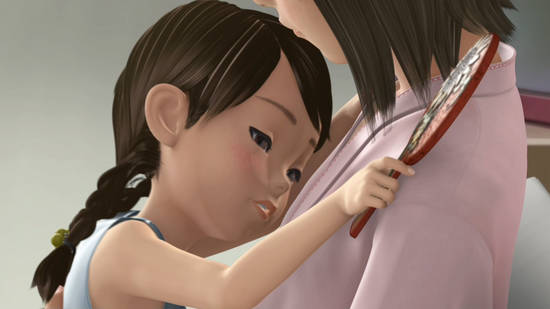
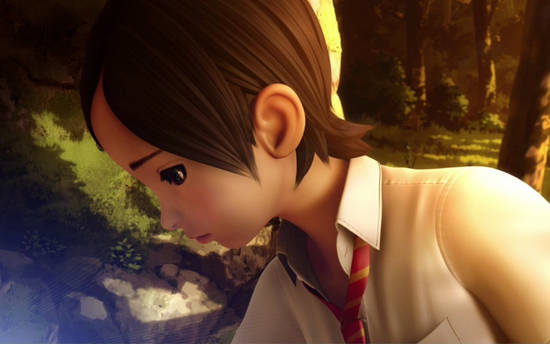

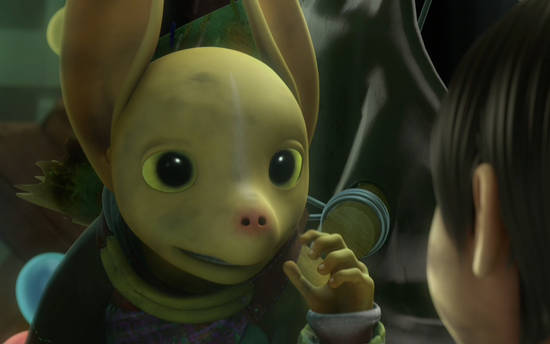
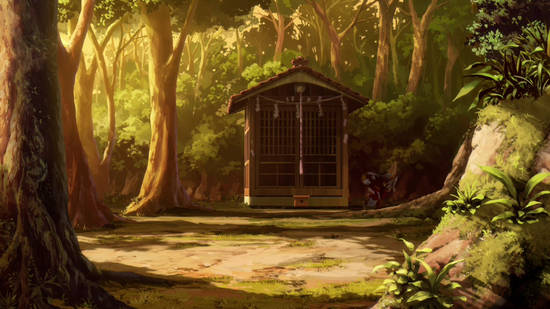

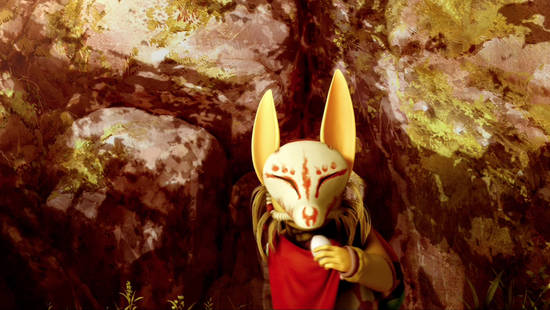
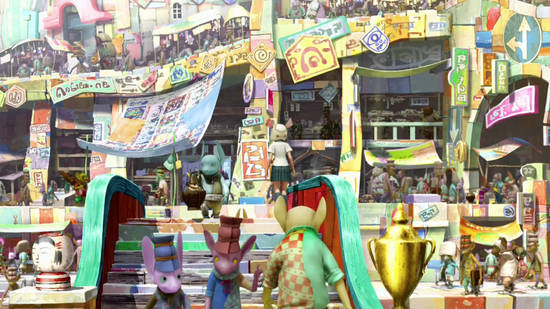
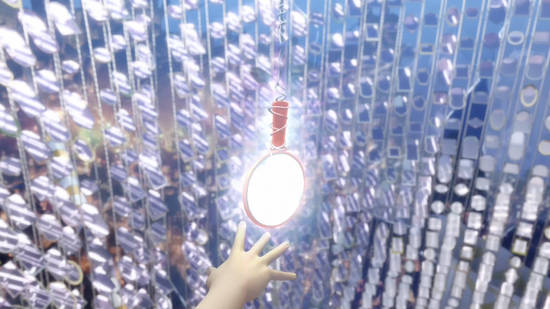
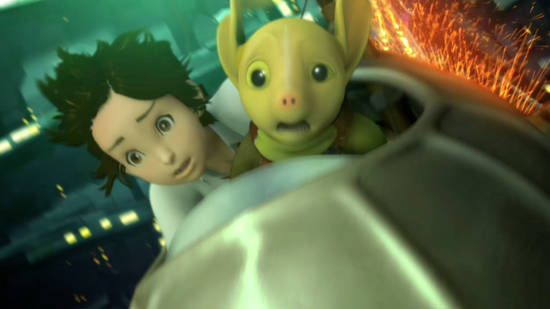
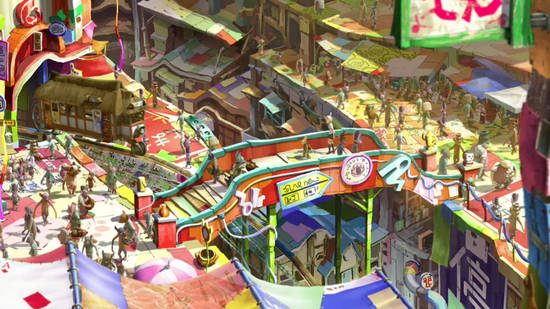
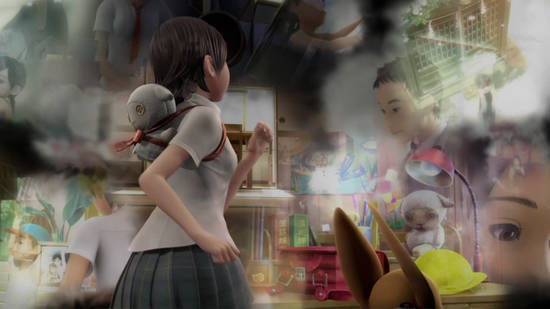
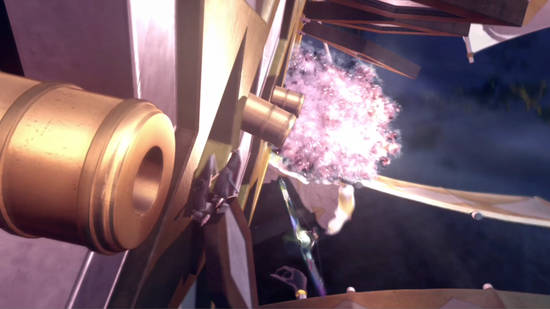
Your Opinions and Comments
Be the first to post a comment!